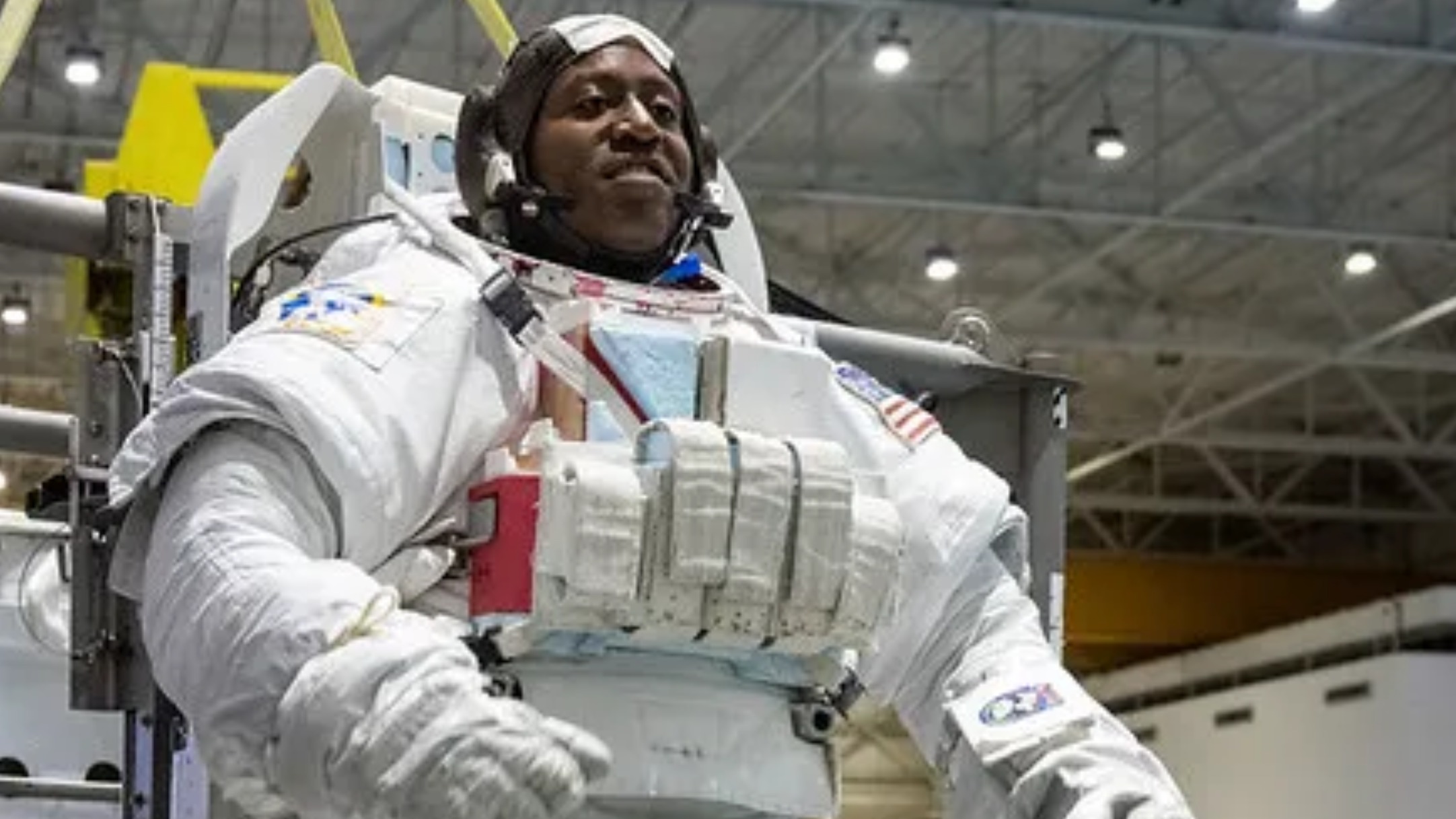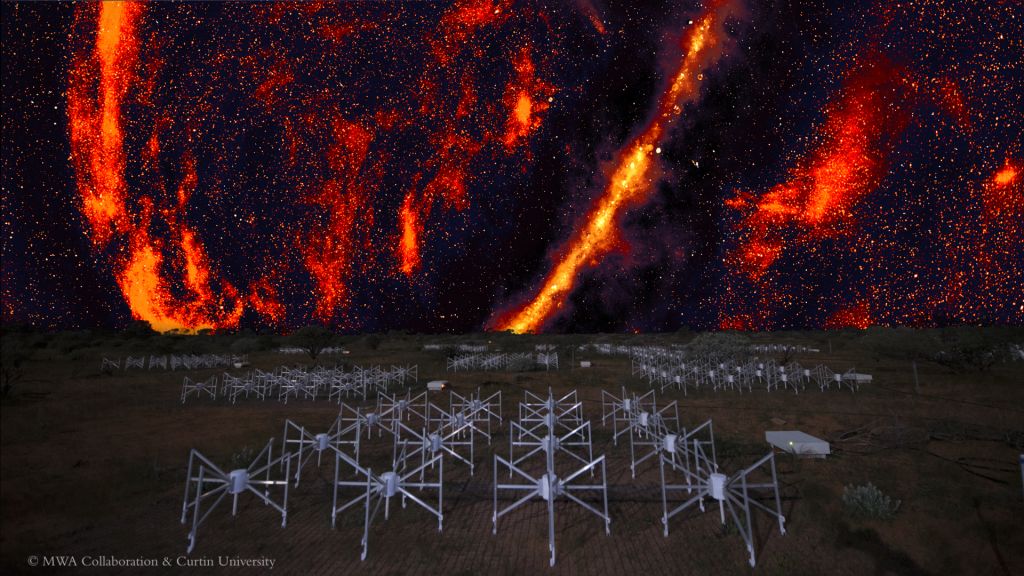[ad_1]
New NASA astronaut Andre Douglas used to check the solar’s habits for a residing.
This places Douglas, who handed fundamental NASA astronaut coaching on March 5, within the good place to speak concerning the complete photo voltaic eclipse 2024 that may sweep throughout the USA on April 8.
The moon will move utterly in entrance of the solar from the attitude of a small a part of Earth alongside the trail of totality, briefly making a spectacular view, and Douglas is amongst a bunch of excited NASA astronauts celebrating the occasion. Douglas as soon as participated in a mission proposal targeted on solar science, which he shared with House.com hours after he graduated from fundamental coaching.
“We had been making an attempt to know photo voltaic habits, as a result of our solar operates in 11-year-long cycles, and we had been making an attempt to know the heliosphere,” Douglas recalled. The heliosphere is the bubble within the photo voltaic system the place the photo voltaic wind, or the fixed stream of particles from our solar, exerts its affect: Auroras or the northern lights are one of the vital common examples of that.
Associated: Complete photo voltaic eclipse 2024: How and the place to observe on-line without cost
Douglas was beforehand an engineer on the Johns Hopkins College Utilized Physics Laboratory in Baltimore, engaged on many missions. For the solar, he was on a group proposing a spacecraft rideshare mission known as SIHLA, or Spatial/Spectral Imaging of Heliospheric Lyman Alpha.
SIHLA was considered one of two semi-finalists funded in 2019 to fly on a NASA mission slated to check interstellar house, and to map out the heliosphere. NASA’s Interstellar Mapping and Acceleration Probe (IMAP) mission will launch no sooner than 2025. (SIHLA was not chosen for launch as an instrument to check Earth’s environment was picked as a substitute, however SIHLA’s work could also be helpful for future mission proposals.)

Whereas Douglas’ work will not fly on IMAP, he did write a few of the software program for one more spectacular NASA enterprise known as DART or Double Asteroid Redirection Take a look at, which efficiently slammed into an asteroid moonlet in 2022. Douglas was a fault administration engineer who wrote programming scripts able to put DART’s pc in “protected mode” if something went unsuitable.
“These tasks had been fairly cool,” Douglas stated of his time at APL, together with his photo voltaic science work. And he is not the one new NASA astronaut who used to check solar science incessantly.
Associated: NASA enlists citizen scientists to assist remedy photo voltaic mysteries in the course of the complete photo voltaic eclipse 2024

Christopher Williams, an astrophysicist and medical physicist earlier than he joined NASA, stated he is excited concerning the photo voltaic eclipse as a result of it can give us distinctive views of the solar’s outer environment.
Williams is aware of intimately what to anticipate, as he as soon as frequently studied stars: His work on the U.S. Naval Analysis Laboratory examined supernovas, or star explosions, utilizing a world-famous set of radio telescopes often called the Karl G. Jansky Very Massive Array. (The antennas are perched within the New Mexico desert and in Hollywood, as soon as helped with alien communications for the 1997 film “Contact” starring Jodie Foster.)

“I did radio astronomy analysis, taking a look at supernovas, and specifically, the radio emission from supernovas — which tells us concerning the historical past of the star that exploded,” Williams defined. The supernova shockwaves that hit the photo voltaic wind give clues to stellar evolution by way of “trying how the sunshine fades in radio [wavelengths],” he added, as this course of produces distinctive signatures of sunshine.
Utilizing the Very Massive Array to check these supernovas “was an superior expertise” that solid the lengthy path that ultimately introduced Williams to NASA, he defined. His love of radio astronomy subsequent allowed him to hitch the Massachusetts Institute of Know-how (MIT), the place he shifted his focus to cosmology or the universe’s historical past.

Whereas with MIT, Williams labored far out within the desert of Australia. He was serving to to construct the Murchison Widefield Array (MWA), which makes use of greater than 4,000 particular person antennas spreading their view throughout a large swath of sky. It is an amazing instrument for each large-scale mapping of the cosmos, and catching temporary occasions like supernovas.
“We had been making an attempt to get a get an image of the so-called ‘Darkish Ages’ of the universe, or the very early universe [about] 100,000 years after the Huge Bang,” Williams stated of his analysis. The MWA investigation he labored on was taking a look at how hydrogen shaped in that period; his group deliberate to analyze impartial hydrogen to in flip study extra about how the primary stars and galaxies had been shaped.
Associated: When did the ‘darkish ages of the universe’ finish? This uncommon molecule holds the reply

The primary 380,000 years after the Huge Bang noticed matter and power fused as superheated gasoline (or plasma) that continuously expanded together with the universe’s measurement. There have been too many collisions of subatomic particles on this period for electrons to kind steady atoms. However after the universe was massive sufficient and funky sufficient, electrons could possibly be shaped from subatomic particles.
That cooling time was when impartial hydrogen atoms had been shaped, though the atoms had been ionized shortly after sufficient stars had been born. The ultraviolet gentle photons from these younger stars, now not absorbed by the hydrogen, then traveled throughout the universe with out boundaries and ended the “darkish age.” However gentle did not shine by way of shortly: the method started roughly 680 million years after the Huge Bang and ended roughly 1.1 billion years after the Huge Bang.
“There’s quite a lot of scientific depth in there, however mainly it is making an attempt to determine how galaxies shaped,” Williams stated of the analysis. “It was an unimaginable expertise, as a result of I received to each work on the cosmology and the science behind that — and get my fingers soiled, serving to construct this telescope out within the distant desert of western Australia, the place there’s not quite a lot of different competing radio sources.”
Nearer to house, the brand new NASA astronauts who joined the corps with different experience are additionally prepared for the brand new photo voltaic eclipse.
New astronaut Jessica Wittner, a naval aviator and check pilot, remembers utilizing photo voltaic glasses to observe a photo voltaic eclipse at her California elementary college (presumably this was the Jan. 4, 1992 annular “ring of fireside” eclipse.) “I really like all issues house. In the case of that (photo voltaic eclipse), I’ll be that little child yet again, when it is occurring,” she advised House.com.
Fellow naval aviator and new astronaut Jack Hathaway stated he is hoping to convey his school-aged youngsters to the occasion, as it’s so near Houston: “Hopefully we’ll have the ability to get the chance to get to go test it out,” he stated in one other interview. “It is going to be this nice alternative to have first-hand expertise of all of the surprise that the universe could cause.”
[ad_2]
Supply hyperlink

